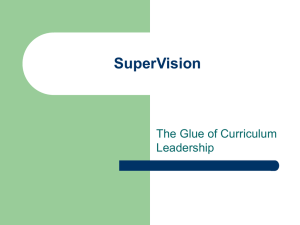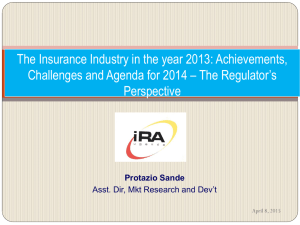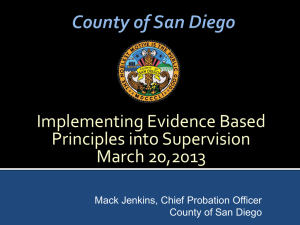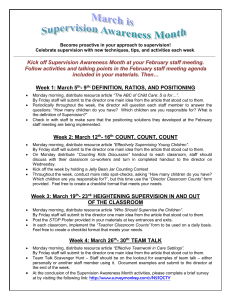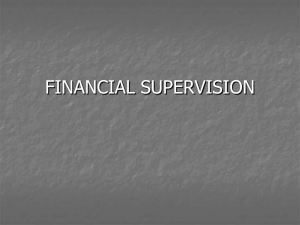The GLPC Job Evaluation Scheme
advertisement
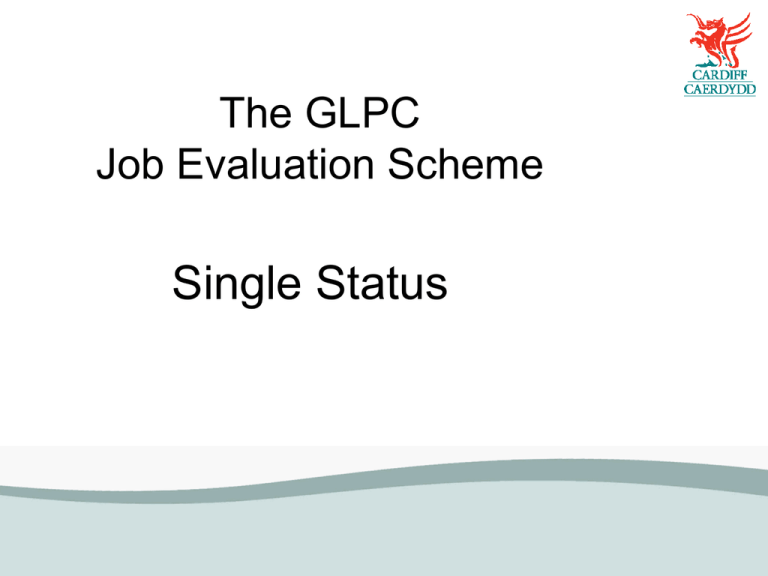
The GLPC Job Evaluation Scheme Single Status Domestics Agenda • Introduction to the Scheme • The factors – Supervision/Management – Creativity/Innovation – Contacts – Decisions – Resources – Work Environment – Knowledge and Skills What is Job Evaluation? Job evaluation is a systematic process whereby jobs are assessed against common criteria in order to establish their relative value It is a management technique It is about the post not the post-holder It is not directly about pay Introduction to the Scheme • Job Evaluation in London Boroughs since 1965 • Covers 160,000 employees in London • Plus thousands in authorities outside of London and in the voluntary sector • This provides over 30 years of practical operational experience • Breaks down jobs into factors • Factors broke down into levels • Points awarded to each factor according to a predetermined scale • Total points determine a job place in rating order • The format of the GLPC Job Evaluation Scheme Objectives • Integrated single-status scheme • Jointly owned with the Unions • Advice from Equal Opportunities Commission • Agreed pay and grading structure Advantages • Provides a rationale for decisions • Less subjective than other techniques • Equitable • Will stand as a defence for equal value The Factors Supervision/Management of People Introduction Objectives: To measure the degree of responsibility for employees Responsibility • Partial/indirect • Direct supervision or management of • Overall accountability for Quality of Management • Nature of Work • Co-ordination • Planning Number Supervised • Head count Supervision/Management of People Aspects of Management Dispersal Deputising Contact (non-direct) Working arrangements (seasonal) Supervision/Management of People Factor Levels Definitions Little/occasional supervision Level 1-2 Full Permanent Direct Management Overall accountability Level 3 Level 4-5 Level 6-7 Type of Work Same Level 1-4 Diverse Level 5 Range of activities/functions Level 6-7 Creativity and Innovation Introduction Objectives To assess the need for innovation and imagination to: respond to issues resolve problems Creativity in its broadest sense caring and counselling system design repair and maintenance specifications policy development written/spoken work Creativity and Innovation Factor Levels Definitions constraints of guidelines range of solutions/responses not limited by a ‘precedent’ major service implications Level 1-4 Level 5 Level 6-7 Level 7 Contacts/Relationships Introduction Objectives To measure the degree of personal contact and appraise the nature of the relationship Qualitative purpose, content, outcome terms of reference conflict/abuse Quantitative regularity significance Nature emphasises direct contact advising, caring, supporting fact finding-evaluating, monitoring interviewing, influencing, persuading providing information Contacts and Relationships Factor Levels Definitions non contentious directive identifying service needs authority to provide resources significant implications range of complex, contentious issues Level 1-2 Level 3 Level 4-5 Level 6 Level 7-8 Decisions Introduction Objectives To measure the requirement to take decisions or make recommendations (discretion) and assess the consequences of such action Discretion need to choose, decide, recommend accountability, supervision of extent of constraints, guidelines, working parties regularity direct/indirect Consequences nature and outcome internal/external effect on people, property, finance, policies, objectives and targets Decisions Factor Levels- discretion and consequences are assessed separately Definitions Within guidelines/ranges of choice Level 1-3 Setting of work standards/changing procedures Level 4 Reviewing policy and service practice Level 5-6 Affecting the whole organisation Level 6 Consequences Limited effect, quickly known, individual Significant Implications for service, employees Major impact on service provision Major policy impact on Council policies across a number of departments on large numbers of people or outside organisations Level 1-2 Level 3 Level 4 Level 5 Resources Introduction Objectives To measure personal and identifiable accountability for physical or financial resources Involves security, safe-keeping, handling, repair and maintenance Covers cash, cheques, plant equipment, materials and buildings Resources Definitions Little or no responsibility Small items of cash and equipment Smaller plant Larger vehicles and plant and large sums of cash Major resources Level 1 Level 2 Level 3 Level 4 Level 5 Work Environment Introduction Objectives To characterise the environment within which the work is carried out-there are four elements which are assessed separately Work Demands-deadlines, frequency, pressure, conflicting priorities Physical Demands-amount and continuity of physical effort-keyboarding, standing, lifting, bending, pulling, pressing and constrained positions Working Conditions-exposure to disagreeable or unpleasant working conditions, frequency and nature Work Context-potential risk to health and safety and general well being inherent in the job, both emotional and physical Work Environment Factor Levels Work Demands Minimal effect of interruption Changes in work area Frequent changes, conflicting priorities Management of constant change and conflicting priorities Physical Demands Normal physical effort Periods of substantial effort, awkward positions Short periods of intense effort and awkward positions Intense effort, substantial effort, awkward positions Level 1-2 Level 3 Level 4 Level 5 Level 1 Level 2 Level 3 Level 4 Working Environment Factor Levels Working Conditions Inside Inside/outside-moderate conditions Outside, considerable noise, exposure to all weather conditions Continuously outside, exposure to all weather conditions Level 1 Level 2 Level 3 Level 4 Work Context Minimal risk Potentially some risk Potentially moderate risk Potentially substantial risk Level 1 Level 2 Level 3 Level 4 Knowledge and Skills Introduction Objectives To measure the knowledge and skill required by the post for competent performance Concept of equivalency Skills-caring, communicative, interpersonal, sensitivity, tact, dexterity,numeracy,practical, linguistic, conceptual Disciplines-professional, technical,specialist,managerial Application-to all levels of the factor Knowledge and Skills How is it acquired? Formal/informal education/training socially practical experience Discipline Discrete body of knowledge Skill Practical knowledge in conjunction with ability-expertise Knowledge and Skills Factor Levels Definitions Basic knowledge-readily understood rules Good standard of practical knowledge Specialist discipline Relationship between functions and disciplines Work of complex nature Work of a more complex nature Work of a highly complex and diverse nature Level 8 Level 1-2 Level 3 Level 4 Level 5 Level 6 Level 7 Framework implementation agreement • • • • • • Consultation Training Tools for collecting job data Personal protection Appeal arrangements Monitoring and Review
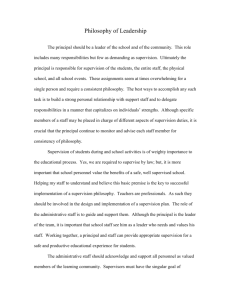




![Job Description - Program Director [1]](http://s3.studylib.net/store/data/005857458_1-3791b985859891a770a8c3867ad1e7d5-300x300.png)
